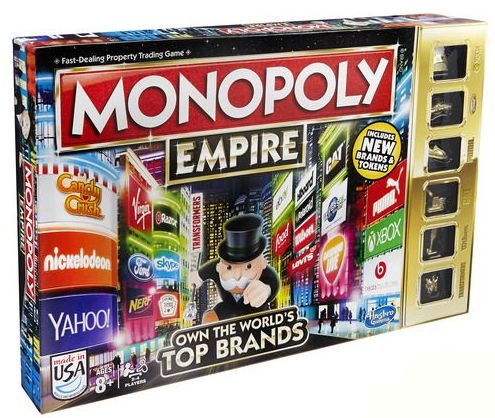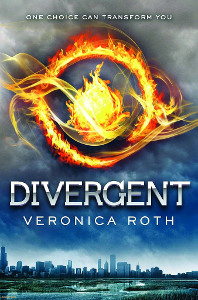August 1st, 2016
This post examines the latest quarterly financial reports from the big 5 book publishers and tries to draw some conclusions from the data. The big 5 are, of course, Hachette, HarperCollins, Macmillan, Penguin Random House and Simon & Schuster. These companies are often seen as emblematic of the state of traditional trade book publishing in the United States.
In April 2015 Publishers Lunch (firewall) took a stab at calculating the overall U.S. trade book publishing market share of the big 5ers (using Association of American Publishers data). (With qualifiers) the report listed:
Penguin Random House 37%
HarperCollins 17.5%
Simon & Schuster 11.7%
Hachette 9%
Macmillan Not estimated
If we slot Macmillan in at 5%, that’s over 80% of the U.S. trade publishing pie. Sounds a bit high, but it reveals the swath these companies cut.
This post contains lots of provisos (in additional detail at the end of the post). None of the five companies is standalone; they’re all part of much larger enterprises, most not publicly traded, and so none report their financial results with a lot of detail. Some are more transparent than others, but none could be described as forthcoming. Amazon reveals few details about books sales, and Apple the same, so why would we expect these behemoths to be any different? That said, some information is made available, mostly quarter by quarter, with an annual summary. Here we go, alphabetically:
Hachette
The Hachette Book Group is part of Hachette Livre which is part of Lagardère Publishing which is part of the Lagardère group, “a global leader in content publishing, production, broadcasting and distribution.” It is a publicly-traded company, headquartered in Paris, France. By coincidence (not) it’s run by a guy named Arnaud Lagardère. To give you an idea of what a modern publishing conglomerate looks like, half of Lagardère’s sales are in its Travel Retail division, comprising stores offering “Travel Essentials, Duty Free & Fashion, and Foodservice.”
Lagardère Publishing contributed 31% of sales and 49% of profits in 2015. The U.S. and Canada accounted for 25% of the publishing division’s sales. Our neck of the woods is even less important to the other three divisions at Lagardère. For all the foofaraw about scope and scale, it’s interesting to see that in 2015 the company published only 900 adult books and 250 for young readers. The self-publishing community emits that many titles on a quiet afternoon.
On July 28 the company disclosed its Q1 results. Publishing sales are recorded just for Lagardère Publishing as a whole, though percent changes are footnoted for the divisions. When all is said and done “revenue came in at €970 million” (U.S. $1.08 billion), which Lagardère described as “stable.” In the U.S. there was a “6.6% decline in activity”.
Most of these companies blame the relative paucity of bestsellers when there’s a sales drop (it’s never management’s fault, or the long-term strategy), and so this decrease “was attributable to a less intensive new release schedule than in first-half 2015.”
Nonetheless there were “strong profitability gains in the US.” This was a result of “disciplined cost management.” What, pray tell is “disciplined cost management”? An example could be spotted in June, 2014, when the “Hachette Book Group laid off nearly 30 people, or close to 3% of its U.S. workforce.”
HarperCollins
HarperCollins is the “second-largest consumer book publisher in the world” (after Penguin Random House). The company issues 10,000 new books each year and has a backlist (both print and digital) of over 200,000 titles. All of this through 120 imprints, each of them as unique as a snowflake.
Some people hold their nose near HarperCollins because it’s part of News Corp, which sounds a bit like Evil Corp, but is different. News Corp is part of the personal fiefdom of Rupert Murdoch, which also includes 21st Century Fox, which owns Fox News, an organization currently in the news itself. No doubt about it, Murdoch’s a controversial guy. But you can’t blame children for their parents. If you did you’d never buy another book from Simon & Schuster (see below).
As noted in News Corp’s last annual report (2015) book publishing represented 19% of company sales and 26% of EBITDA*. Two-thirds of News Corp’s sales are from newspapers, including the Wall Street Journal and the New York Post.
News Corp’s Q3 report, released in May, revealed that HarperCollins sales decreased by $44 million, or 11%. That’s a big hit.
Publishers Weekly looked behind the data. The foreign currency shortfall was $6 million. The ebook sales hit has a convoluted reasoning: In 2015 ebooks sales were 22% of the total, in 2016 ebook and audio together accounted for 21% of sales. You do the impossible math.
More striking is the revelation around the bestseller burden. The report includes one of those “blame it on the bestsellers” statements. The decrease, it said, was “due to lower revenues from American Sniper by Chris Kyle and the Divergent series by Veronica Roth.” The company’s actual legal SEC (Securities and Exchange Commssion) filing says that the loss of revenue in the quarter from both authors was $29 million!
As I intimate above, while I think that publishing management might apportion too much blame to a dearth of new bestselling titles when there’s a dearth of sales, there’s no question that publishing is a hit-driven business (in this respect similar to both the movie and the music businesses). Let’s look at the numbers in more detail.
According to Publishers Lunch (paywall) American Sniper sold 851,000 copies in all of 2015 and the movie tie-in added another 355,000. The list price is $9.99 for the paperback. There are two Kindle editions, one at $9.99 and an enhanced version at $7.99 (with the predictable result that on Amazon the paperback is $1.50-$3.50 cheaper than the Kindle editions).**
Assuming, for argument’s sake, that HarperCollins receives roughly half of that amount for each copy sold, the total 2015 print sales for the book were just over $6 million. Assuming that the ebooks are selling at about industry average ratios, around 25%, ebook sales would add roughly 300,000 copies to the pool.
By last year the Divergent titles had already fallen off the bestseller lists: their sales crested in 2014. Still, there are four titles in the series, plus a boxed set: between them they’d probably have been a top bestseller.
The four Divergent titles retail for $12.99 each in paperback, or $29.98 for the set. The Kindle editions vary from $6.99 and $7.99 to $9.99 for Allegiant (with the predictable result that the paperback is $2 cheaper on Amazon than the Kindle edition).
So what’s the average revenue per title for these bestsellers? Let’s be generous and go with $7.50 per. To drop $29 million in sales in three months there would have to be a drop of at least 5 million unit sales. I don’t see it. What am I missing?
Macmillan
Macmillan is part of the Holtzbrinck Group, which is owned by Georg von Holtzbrinck GmbH & Co. in Stuttgart, Germany. It’s a privately held family business and releases very little financial data. In 2014 Macmillan Publishers contributed 42% of total Holtzbrinck revenue, and North America accounted for 39% of the total. But the rest of the revenue comes from STM (Scientific, Technical, and Medical) and textbook publishing, which have very different dynamics than trade publishing. So it’s all-but-impossible to meaningfully interpret the little financial data the company releases. Publishers Weekly provided an overview of those finances in a mid-2015 article. Let’s move on.
Penguin Random House (PRH)
If trade publishing was a grade 5 classroom Penguin Random House would be the bully. As Publishers Weekly describes the company it publishes 15,000 new titles from 250 imprints annually and employs 12,500. Random House and Penguin were separate companies until 2013 when their respective owners Bertelsmann and Pearson agreed to a merger owned 53%/47% respectively. Each organization reports aspects of the company financials (at different times of the year). Bertelsmann is a private company, controlled by Germany’s Mohn family, although it publicly discloses some financial data. PRH comprises 22% of Bertelsmann sales. Pearson meanwhile is a public company, widely owned, focused solely on education.
Pearson reported its 2016 first half-year results on July 29. The news, as has become the norm for Pearson, was not good. Sales declined 7% (or 11% at a constant exchange rate) and operating income by 80%. Pearson is in the middle of a companywide restructuring “aimed at simplifying its operations”, kind of like Hachette’s “disciplined cost management.” It’s in the midst of eliminating 4,000 jobs worldwide. The body count currently stands at 3,450.
Pearson said that Penguin Random House sales were up slightly in the first half, though it doesn’t expect that to hold till year end. It notes “reduced demand for ebooks.”
Bertelsmann’s last report of revenues at Penguin Random House (the year-end report for 2015) noted an 11.8% increase “mainly as a result of positive exchange rate effects and higher printed book sales.” Top line earnings* increased by 23.2, attributable largely to “savings from the largely completed integration of Penguin and Random House” i.e. eliminating “redundant” staff and operations.
In Bertelsmann’s May report for the first quarter of 2016 “organic growth” was 2.7% though no figures were provided for PRH.
Aug 31, 2016: Bertelsmann today provided its half-year report of revenues at Penguin Random House. Ebooks continue to bedevil the largest publishers. Revenue declined 10.7% to €1.5 billion (2015: €1.7 billion) because of an “expected decline in ebook sales in the United States and UK.” Physical book sales were “steady” while audio grew by an unspecified amount.
Simon & Schuster
Since 2006 Simon & Schuster (S&S) has been part of CBS Corporation, though how it got there reads like a pocket history of publishing mergers and acquisitions in the 20th century. CBS Corporation is controlled by Sumner Redstone through National Amusements, which also controls Viacom (while, “controls” doesn’t mean “owns”; “controls” does mean control). The stories swirling around Sumner Redstone these days make Rupert Murdoch look like a boy scout.
S&S publishes over 2,000 titles annually from 35 imprints, including Pocket Books and Scribner.
S&S accounted for less than 6% of CBS sales last year, and an even smaller percentage of operating income. The year ended with sales just slightly above 2104, all of that because of a strong fourth quarter, attributed in part to bestselling titles from Stephen King (The Bazaar of Bad Dreams) and Donald J. Trump (Crippled America: How to Make America Great Again).
CBS’s second quarter financial report, released July 28, 2016, provided up-to-date S&S data. “Publishing revenues for the second quarter of 2016 were $187 million compared with $199 million for the same prior-year period,” the report notes, while operating increased slightly (4%) from $25 million to $26 million year-to-year. With revenue down by $12 million where did they find the extra profits? Some of that good ol’ disciplined cost management, in this case “lower production, selling, and inventory costs.”
Publishers Lunch reported (paywall) that Simon & Schuster CEO Carolyn Reidy said the sales drop was “purely (bestselling) title related.”
Conclusion
Author Earning reports are an essential complement to this post as they analyze the broader publishing landscape (on Amazon) that includes other small/medium publishers and the indies. Its May report shows that the big 5’s share of Amazon ebooks unit sales has declined from nearly 40% of total units sold at February 2014 to roughly 23% at May 2016. Their share of gross sales has dropped by a quarter in the same period. (There’s much more in the 16,000 word report.)
There’s a striking bit of news from Publishers Weekly on July 28: On the Apple iBooks Bestseller list the preceding week, five of the top ten titles were self-published, including three of the top five. It strikes me as a milestone.
What are we to say about this state of affairs? After many years of growth the big 5 are now reporting sales and profits mostly flat or declining. They’ve pared expenses through layoffs and consolidation, and my sense is that there’s not much more paring that can be done.
What seems inevitable is another merger or acquisition. In late 2012 HarperCollins (News Corp) and Simon & Schuster discussed a merger. News Corp had also considered a cash offer for Penguin before the Random House merger. There’s no obvious reason for Lagardère to dump Hachette or for Holtzbrinck to drop Macmillan. That leaves S&S as the most attractive prey, followed by HarperCollins. Expect something soon.
Notes
- If you’re interested in the finances of the publishing industry, in particular those companies which report publicly, you need a subscription to Publishers Lunch, not Publishers Weekly (PW). PW mostly just reports the financials as reported in press releases. It doesn’t dig deep. You need to be very interested: a Publishers Lunch subscription is $275/year. Therefore all of the best stuff at Publishers Lunch remains behind the paywall, though I’ve used some of its analysis to inform my reporting in this post.
- I’ve tried to pull accurate summaries from the sometimes complex financial reporting, but keep in mind that financial data doesn’t always like being generalized.
* I’m using “top line earnings” as a proxy for EBITDA, which is earnings before interest, taxes, depreciation and amortization.
** There’s a unbelievably bad metadata mess for this book on Amazon. There are three different landing pages for the book, under ASIN: B006LA6IW2, ASIN: B005GFPZYK, and then ISBN-10: 0062238868 (without an ASIN). There’s a fourth for the “Memorial Edition” of the book (ASIN: B00CO4GO7I).
The Kindle features differ. There’s a plain old Kindle edition for $9.99 ($13.49 for the “Memorial Edition”), and a “Kindle Edition with Audio/Video” for $7.99. When you’re on the page with the $9.99 Kindle edition and click on the paperback you’re taken to a page featuring the enhanced Kindle edition for $2 less. I’ve never seen a major bestselling title so badly cataloged on Amazon. If I was planning to buy the book I’d be scratching my head trying to figure out what the heck to buy, and why the paperback is so much cheaper than the Kindle ebook.
August 26, 2016: Publishers Weekly released its annual World’s Largest Book Publishers listing. It notes that “more than half of the companies on the global ranking had a decline in sales last year.”
November 3, 2016: Houghton Mifflin Harcourt, not one of the big 5, but a significant player, announced significant declines in sales and profitability.
November 11, 2016, Publishers Weekly: Book Publishers See Third-Quarter Bounce.



